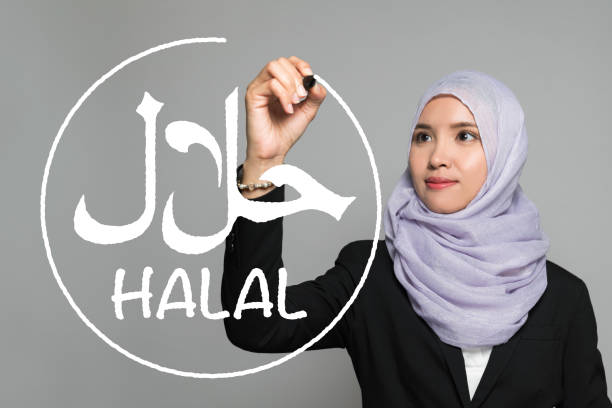Comprehensive Overview of Halal
1. Definition
Halal (Arabic: حلال) translates to “permissible” or “lawful” in English and originates from Islamic law (Sharia). It represents a set of guidelines derived from the Quran, the Hadith (sayings of the Prophet Muhammad), and Islamic jurisprudence (fiqh). Halal governs not only food but also lifestyle practices, ensuring compliance with the ethical and moral teachings of Islam. Its opposite is Haram, meaning “forbidden.”
2. Categories
Halal extends beyond food to encompass various aspects of life, including:
- Food and Beverages: Covers permissible ingredients, preparation methods, and handling practices.
- Cosmetics and Pharmaceuticals: Ensures products are free from haram substances (e.g., alcohol, pork derivatives) and ethically sourced.
- Finance: Halal finance prohibits interest (riba) and investments in industries deemed unethical, such as gambling, alcohol, or tobacco.
- Fashion and Lifestyle: Includes modest clothing and ethically produced goods adhering to Islamic principles.
3. Criteria
Determining whether something is Halal involves adhering to specific guidelines:
- Dietary Restrictions:
- No consumption of pork or its derivatives.
- No alcohol or intoxicants.
- Animals must be slaughtered according to Islamic principles (Zabiha), ensuring humane treatment and invocation of God’s name (Bismillah) during slaughter.
- Ethical Considerations: Products must be free from exploitation, cruelty, or environmental harm.
- Cross-Contamination: Halal items must not come into contact with Haram substances during preparation, storage, or transportation.
4. Cultural Significance
For Muslims worldwide, Halal represents more than just dietary rules; it embodies a holistic approach to life aligned with their faith. Observing Halal is a way of demonstrating devotion to Islamic teachings and fostering community identity. It also reflects ethical choices, promoting humane practices and fairness.
5. Global Impact
The Halal market has grown significantly, driven by an expanding Muslim population and increasing demand from non-Muslims valuing Halal’s ethical and quality standards.
- Market Trends:
- The global Halal food and beverage market is projected to exceed $2 trillion by 2030.
- Rising interest in Halal cosmetics and pharmaceuticals.
- Consumer Demographics: While primarily catering to 1.9 billion Muslims, the market attracts non-Muslims seeking organic, ethical, and high-quality products.
- Geographical Hotspots: Southeast Asia, the Middle East, and parts of Europe and North America lead in demand and production.
6. Misconceptions
Several myths surround Halal practices:
- Halal is only about food: Halal extends to finance, cosmetics, lifestyle, and ethical practices.
- Halal products are exclusively for Muslims: Many non-Muslims appreciate Halal standards for their hygiene, quality, and ethical sourcing.
- Halal slaughter is inhumane: Islamic guidelines emphasize animal welfare, requiring humane treatment and minimizing pain.
7. Regulations
Halal certification ensures compliance with Islamic principles and provides consumer confidence. Certification bodies establish rigorous standards, which vary by region:
- Examples of Certification Bodies:
- JAKIM (Malaysia)
- HFA (Halal Food Authority, UK)
- IFANCA (Islamic Food and Nutrition Council of America)
- Certification Process:
- Inspection of ingredients, production facilities, and processes.
- Continuous monitoring and periodic audits.
8. Challenges
The Halal industry faces several obstacles:
- Compliance: Ensuring consistency across diverse global markets with varying interpretations of Halal.
- Labeling: Preventing misuse of the Halal label by uncertified products.
- Consumer Awareness: Educating both Muslims and non-Muslims about the scope and benefits of Halal products.
- Fraud and Adulteration: Tackling unethical practices and maintaining consumer trust.
- Standardization: Harmonizing certification standards internationally to simplify trade.
Conclusion
Halal represents a vital aspect of Islamic practice, combining spiritual, ethical, and practical dimensions. Its influence extends globally, not just within Muslim-majority societies but also among non-Muslims appreciating its standards. While the industry faces challenges, its growth reflects its adaptability and increasing recognition as a symbol of quality and integrity.


